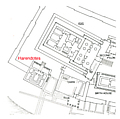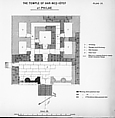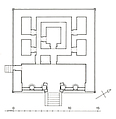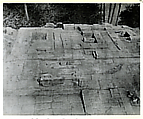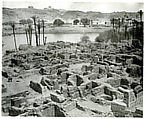Column Capital
Roman Period
This capital and its companion piece (11.154.5) are carved with a stylized palmette pattern, with the plants arranged in two tiers of different sizes. The palmette pattern—once brightly painted—covers the unstructured bell-shaped core like a dense net. This surface treatment is a typical stylistic feature of the architecture of the period.
Both this capital and its companion probably came from the temple of Harendotes—the name of the god Horus in his role as avenger of his father, Osiris, who was slain by Seth. The temple, which was built under the emporers Claudius and Nero, was located west of the great Isis temple on the Island of Philae. The building stood on a platform with a central staircase leading to the front. The facade was similar to that of the Museum's Temple of Dendur (68.154); the Harendotes temple, however, had four front columns. In late antiquity, the building was razed to its foundation platform and elements were incorporated into Byzantine churches.
Due to rights restrictions, this image cannot be enlarged, viewed at full screen, or downloaded.
This artwork is meant to be viewed from right to left. Scroll left to view more.


